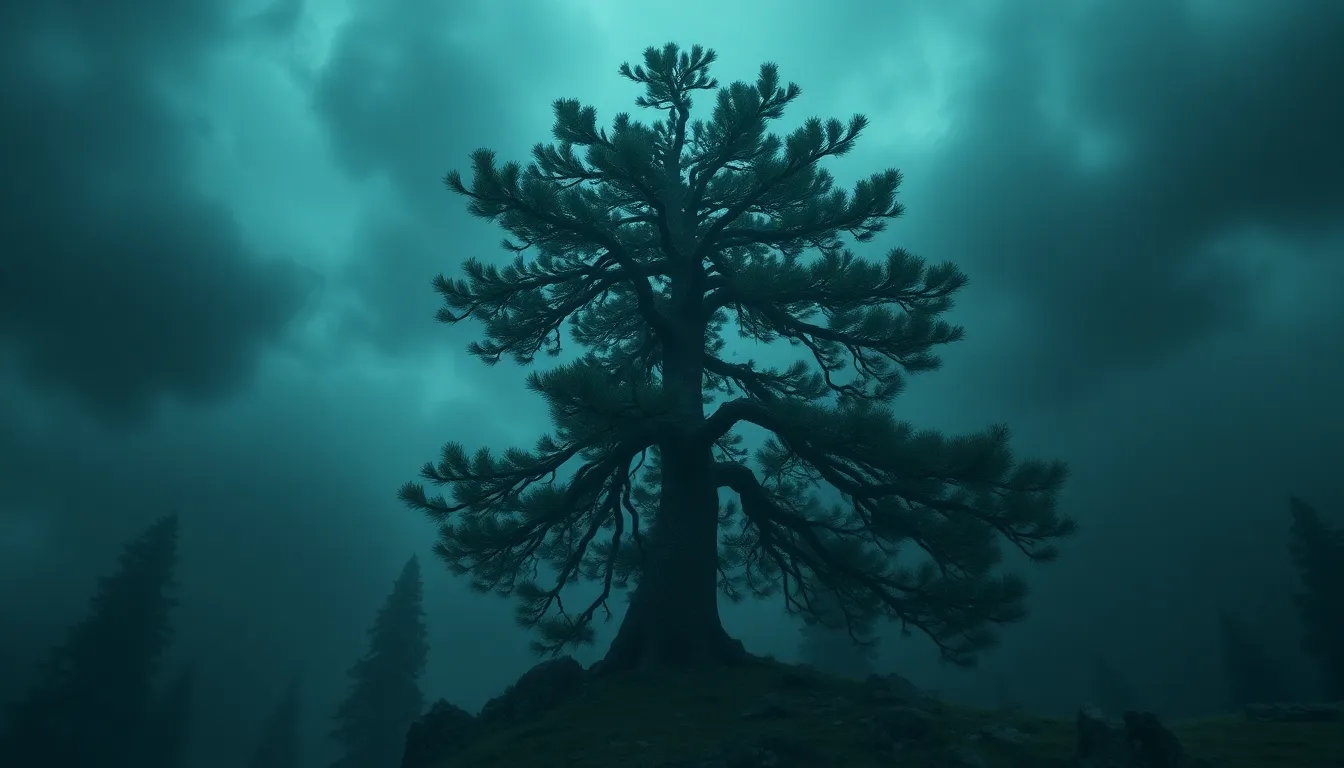The Sacred Baobab: Myths of Wisdom and Longevity
Introduction to the Baobab Tree
The Baobab tree, known scientifically as Adansonia, is a remarkable species native to Madagascar, mainland Africa, and Australia. Characterized by its massive trunk, which can store thousands of liters of water, the Baobab can reach heights of up to 30 meters and live for over a thousand years. Its unique silhouette, often resembling an upside-down tree, makes it a striking feature of the African landscape.
In many cultures, the Baobab is more than just a tree. It holds deep cultural significance, often regarded as a symbol of life, fertility, and community. Various tribes have woven the Baobab into their cultural narratives, celebrating its presence in rituals and folklore.
The Baobab in Mythology
The Baobab is steeped in mythology across various African communities. Many stories explain how this tree came to be, often portraying it as a gift from the gods or as an embodiment of the Earth’s wisdom. For instance, one popular myth tells of a time when the Baobab was uprooted and planted upside down by the gods as a punishment for its arrogance.
In African folklore, the Baobab symbolizes strength and endurance. It is often depicted as a wise elder, sharing knowledge with younger generations through stories told beneath its wide canopy. These tales serve not only as entertainment but also as moral lessons about life and community values.
Cultural Significance of the Baobab
The Baobab tree plays a vital role in community gatherings and rituals. Its broad trunk provides shade and a gathering place for people, serving as a natural meeting point where decisions are made and traditions are passed down. The tree often features in ceremonies such as weddings, naming rituals, and harvest celebrations.
- Community Hub: The Baobab acts as a central point for social interaction.
- Ritual Significance: Used in various cultural ceremonies and rites of passage.
- Cultural Landmark: Many communities identify themselves with specific Baobab trees, reinforcing local identities.
The Baobab as a Symbol of Wisdom
Beyond its physical presence, the Baobab is often interpreted as a metaphor for wisdom and knowledge. Its longevity and the vastness of its trunk symbolize the depth of understanding that comes with age. Many proverbs and sayings link the Baobab with wisdom, emphasizing the importance of learning from the past.
For example, in some cultures, it is said, The Baobab does not fall in a day, highlighting the idea that wisdom takes time to develop. Such expressions reflect the tree’s role as a silent witness to history and a keeper of communal memory.
Longevity and Resilience of the Baobab
Scientifically, the Baobab is known for its extraordinary lifespan, with some trees estimated to be over 1,000 years old. This resilience is attributed to its ability to adapt to harsh environmental conditions. The Baobab’s thick, fibrous bark protects it from fire and drought, while its deep root system allows it to access water far below the surface.
- Water Storage: The trunk can store up to 120,000 liters of water, helping it survive in arid climates.
- Fire Resistance: Its thick bark insulates the tree from fire damage.
- Drought Tolerance: The Baobab can endure prolonged periods without rain.
Ecological Importance of the Baobab
The Baobab is not only a cultural icon but also plays a crucial role in local ecosystems. It provides habitat and sustenance for various wildlife species, including birds, bats, and insects. The flowers of the Baobab tree attract pollinators, while the fruit provides food for both animals and humans.
Additionally, the Baobab’s capacity to store water helps maintain the surrounding ecosystem, influencing the availability of resources for other plants and animals.
Modern Uses of Baobab
In contemporary society, the Baobab fruit has gained attention for its nutritional and medicinal properties. Rich in vitamin C, antioxidants, and dietary fiber, Baobab fruit is often marketed as a superfood. The pulp is used in smoothies, snacks, and various health products.
Moreover, the economic potential of Baobab is significant, with sustainable harvesting practices emerging to benefit local communities. By promoting the tree’s products, communities can earn income while preserving their cultural heritage.
Conservation Challenges and Efforts
Despite its resilience, the Baobab faces several threats, including climate change, deforestation, and land development. As populations grow and urbanization spreads, the habitats of these sacred trees are increasingly at risk.
Conservation initiatives are essential to protect Baobab populations. Efforts include:
- Awareness Campaigns: Educating communities about the ecological and cultural importance of the Baobab.
- Protected Areas: Establishing conservation areas to safeguard existing Baobab trees.
- Sustainable Practices: Promoting sustainable harvesting and use of Baobab resources.
The Baobab in Art and Literature
The Baobab’s striking form has inspired artists and writers around the world. In literature, it often symbolizes resilience and the interconnectedness of life. Contemporary art frequently celebrates the Baobab, representing it as a symbol of African identity and heritage.
Globally, the Baobab influences perceptions of African culture, showcasing the continent’s rich biodiversity and cultural depth. Its representation in art helps bridge cultural gaps, fostering appreciation for the natural world and indigenous traditions.
Conclusion: The Future of the Baobab
The Baobab tree stands as a testament to the wisdom and endurance of nature. Its cultural significance and ecological contributions make it a vital part of African heritage and the global environment. As we reflect on the enduring legacy of the Baobab, it is crucial to advocate for its conservation and appreciation.
By recognizing the importance of the Baobab, we not only preserve a symbol of wisdom and longevity but also ensure that future generations can continue to draw inspiration from this sacred tree. Together, we can work towards a future where the Baobab remains a cherished part of our natural and cultural landscapes.



